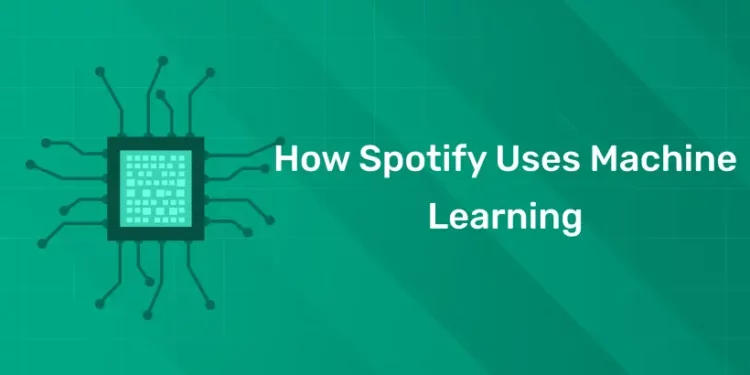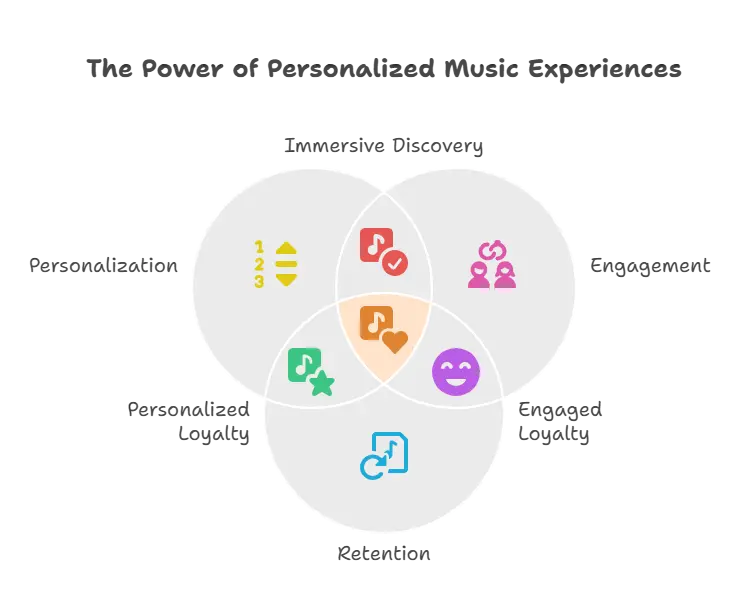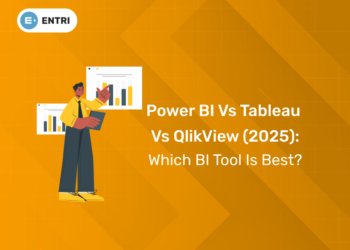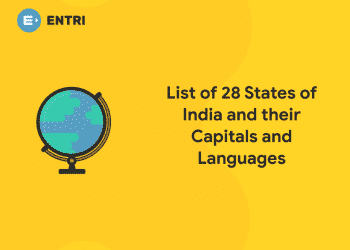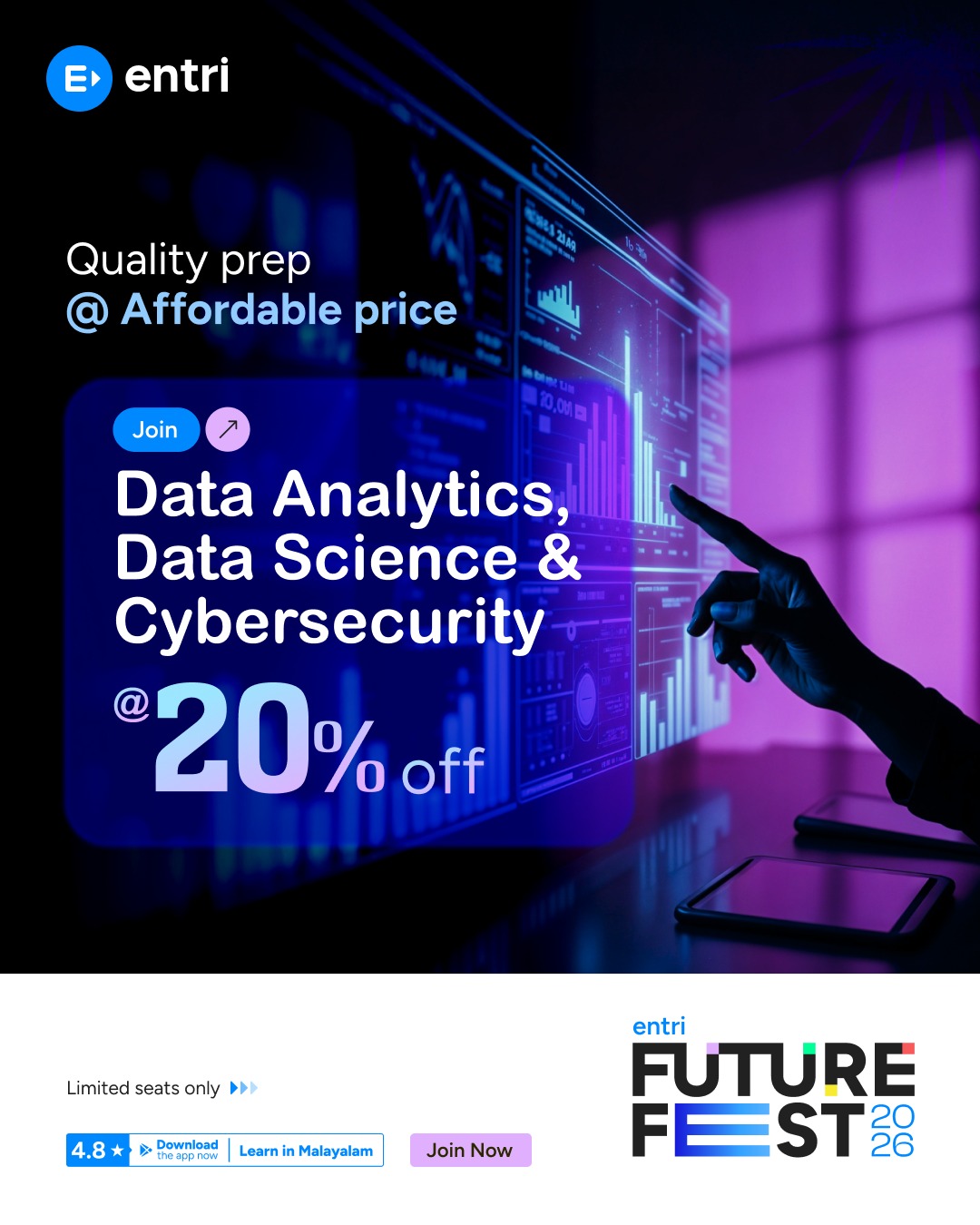Table of Contents
For online music listening, Spotify is the best site. People from all over the world can choose from millions of carefully chosen songs, videos, and mixes. Spotify is very easy to use, and it has a huge library of songs. For music fans, this makes it easy to find everything from new hits and top songs on the charts to hidden gems.
In the crowded online music market of today, personalization is very important. Everyone listens in their own way and likes different things. One kid might enjoy happy pop music, while another might find that silent music helps them concentrate. When the app plays the right music at the right time, users feel like it “knows” them, which also keeps them interested.
Machine learning (ML) starts to get in the way at that point. Spotify uses machine learning (ML) to look at a lot of data, like what songs you’ve listened to and how they sound, to make suggestions for songs to play and improve the listening experience. In order to make smart, personalized sound experiences out of random data, Spotify uses machine learning.
Enhance your data science skills with us! Join our free demo today!
Overview of Machine Learning at Spotify
With more than 600 million daily users around the world, Spotify works at a level that can’t be managed by humans alone. Listeners create a huge amount of data every day through searches, skips, playlists, likes, and even the times of day they like certain types of music. Because Spotify is based on data, it is a great place to use machine learning (ML).
The machine learning systems at Spotify are made with three main goals in mind:
- Personalization: Personalization means making a unique musical journey for each viewer and making sure that the app feels like it was made just for them.
- Engagement: Engagement means getting people to spend more time looking into music, bands, and shows that they might like.
- Retention: Keeping people by giving them new and useful listening experiences all the time so they don’t switch to other platforms.
By mixing huge amounts of user data with advanced machine learning models, Spotify turns raw listening patterns into smart suggestions and smooth finding experiences. This makes it more than just a music library—it turns into a personalized soundtrack for daily life.
Key Use Cases of Machine Learning in Spotify
1: Which of the following algorithms is most suitable for classification tasks?
a) Methods for Making Suggestions
Spotify looks for trends. If two users like the same bands, the platform will suggest songs from one user’s past to the other.
NLP: Spotify reads song lyrics, music blogs, and reviews to figure out what songs are about and how people talk about them.
Auditory Analysis Models: Spotify uses convolutional neural networks to look at raw audio to find out the speed, mood, genre, and energy level of a song, which helps it be put into the right category.
b) Check out Mixed Daily and Weekly
Machine learning is used by Spotify’s popular Discover Weekly playlist to look at how a user listens and see what other users like them do. Every Monday, the choices are updated. Similarly, Daily Mix keeps people interested by mixing old hits with new songs.
c) Custom Sets of Songs
Release Radar (new music from bands you follow) and On Repeat (your most-played songs) are two examples of playlists that are run by context-aware machine learning models that change based on how each user acts and their changing tastes.
d) Targeting ads and making money
Predictive machine learning models tell Spotify which ads to show to free users and when. It separates viewers into groups based on their listening habits and hobbies, making sure that ads reach the right people.
e) Analysis of how users act
Spotify looks at a lot of data, such as the number of skips, listen-throughs, and repeats. ML models use things like location, gadget type, and even time of day to make suggestions better.
f) Sorting the content
Natural language processing (ML) helps sort songs automatically by style, mood, and volume. As an example, if a song has a fast beat and a lot of energy, Spotify might instantly put it in a “Workout” playlist.
🚀 Start Coding Today! Enroll Now with Easy EMI Options. 💳✨
Equip yourself with in-demand skills to land top-tier roles in the data-driven world.
Start Learning Now with EMI OptionsSpotify’s Technology Stack for ML
It takes a strong set of technologies that support large-scale machine learning to make Spotify’s suggestions and custom mixes work so well. Daily, the platform handles billions of data points. To train and launch ML models quickly, it uses a mix of open-source tools, cloud infrastructure, and solutions built in-house.
Here are some of the most important parts:
- Python: This is the main computer language used to create and test machine learning models.
- TensorFlow: This is a deep learning system that is widely used to train neural networks, like those that study audio data.
- Scio: This is a Scala API for Apache Beam that helps Spotify handle batch and stream processing of very large amounts of data.
- Luigi: It is an open-source process planner that Spotify made to help you build complicated flows and deal with relationships.
- Tonic: This is Spotify’s own machine learning processing system that makes it easier to build, launch, and keep an eye on large-scale machine learning models.
Spotify also uses the Google Cloud Platform (GCP) for flexible computing and storage, which lets them analyze data in real time and try new things quickly. This strong stack lets Spotify keep improving its selection systems and give each user a very unique experience.
Challenges Spotify Faces
Machine learning systems at Spotify are very smart, but they also have some problems. There are a lot of technical and moral problems that need to be solved before millions of people can truly enjoy personalized music:
Cold Start Problem: With the cold start problem, there isn’t enough previous data to make good suggestions when a new user signs up or when a new song is added to the site. Until more specific data is available, Spotify deals with this by using information, trends in fame, and general listening habits.
Bias in Recommendation Systems: ML models can sometimes favor well-known artists and major styles over less well-known or niche singers, which can cause bias in recommendation systems. Users can’t find new things as easily, and new artists trying to get noticed may also be hurt by this.
Privacy and Ethical Concerns: Because Spotify’s suggestions are based on how people use the service, it needs to make sure that private hearing data is kept and handled in a responsible way. Every day, it’s hard to find the right balance between custom, user privacy, and global data protection laws.
However, Spotify keeps working to improve its algorithms so that fans have better, more accurate, and more private experiences.
Enhance your data science skills with us! Join our free demo today!
Future of Machine Learning at Spotify
Spotify says that going forward, machine learning will be used a lot more to help people find music and enjoy it. There are a few strange ways to go:
Hyper-Personalization: It will be possible to make suggestions based on your mood, the situation, and what you’ve been through, rather than just general music styles and acts. Imagine that Spotify chose music for your workout in the morning, your boring drive, or your late-night study session. There’s nothing you need to do.
AI-Generated Playlists: Generative AI models can make new songs in real time that mix your best styles, beats, and feelings into a unique mix. This is better than just using music that is already out there. With this, Spotify would be able to better meet your wants.
Voice-Based Mood Detection: In order to make its music recommendations more useful as the number of smart devices increases, Spotify is thinking about adding speech patterns, mood cues, or even tone of voice. Are you stressed? The music might begin to flow more slowly. Are you sure you said “full of energy”? If the music makes you feel good, it might play by itself.
Now that these changes have been made, Spotify will soon be more than just a service that offers music. It will change to fit your needs and provide an active background.
🚀 Start Coding Today! Enroll Now with Easy EMI Options. 💳✨
Equip yourself with in-demand skills to land top-tier roles in the data-driven world.
Start Learning Now with EMI OptionsCONCLUSION
By using machine learning to give us a more personalized experience that goes beyond just a huge library of songs, Spotify has changed the way we stream music. Not only does ML power personalized tracks and recommendation systems, but it also analyzes user behavior and sorts material into categories; all of these features keep users interested and loyal. Spotify is still working on mood-based ideas, hyper-personalization, and tracks made by AI, even though there are still issues like the cold start problem, tips that aren’t always fair, and privacy concerns. Not only does it help people listen to music, but it also uses machine learning to help them find the moving score of their lives.
🚀 Start Coding Today! Enroll Now with Easy EMI Options. 💳✨
Equip yourself with in-demand skills to land top-tier roles in the data-driven world.
Start Learning Now with EMI OptionsFrequently Asked Questions
What is the role of AI in Spotify’s recommendations?
AI helps Spotify learn from millions of user interactions, analyzing patterns in listening history, skips, and replays to suggest music that fits a user’s unique tastes and moods
What technology stack does Spotify use for machine learning?
Spotify relies on tools like Python, TensorFlow, Scio, Luigi, and its own ML pipeline “Tonic,” along with Google Cloud Platform for large-scale data processing.
Does Spotify protect user privacy while using machine learning?
Yes, Spotify follows strict privacy and data protection policies, ensuring user data is anonymized and handled responsibly while still providing personalization.
How does Discover Weekly work?
Discover Weekly uses collaborative filtering, audio analysis, and NLP to compare your listening habits with others, recommending songs you haven’t heard but are likely to enjoy.
How does Spotify use machine learning?
Spotify uses ML to analyze user behavior, song attributes, and contextual data in order to recommend music, create personalized playlists, classify content, and optimize ads.


